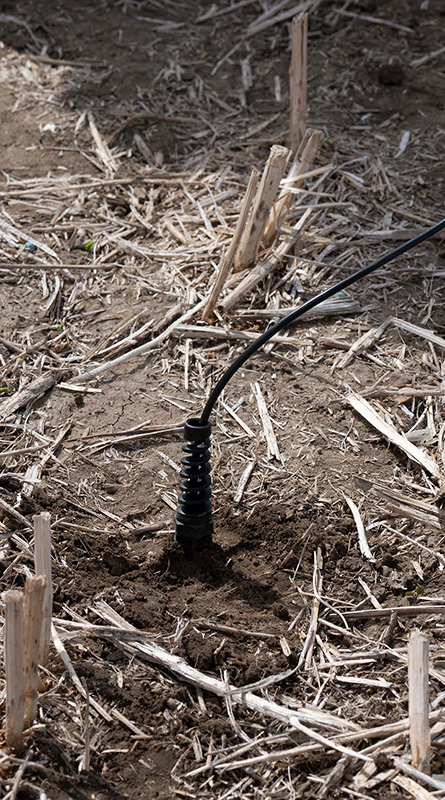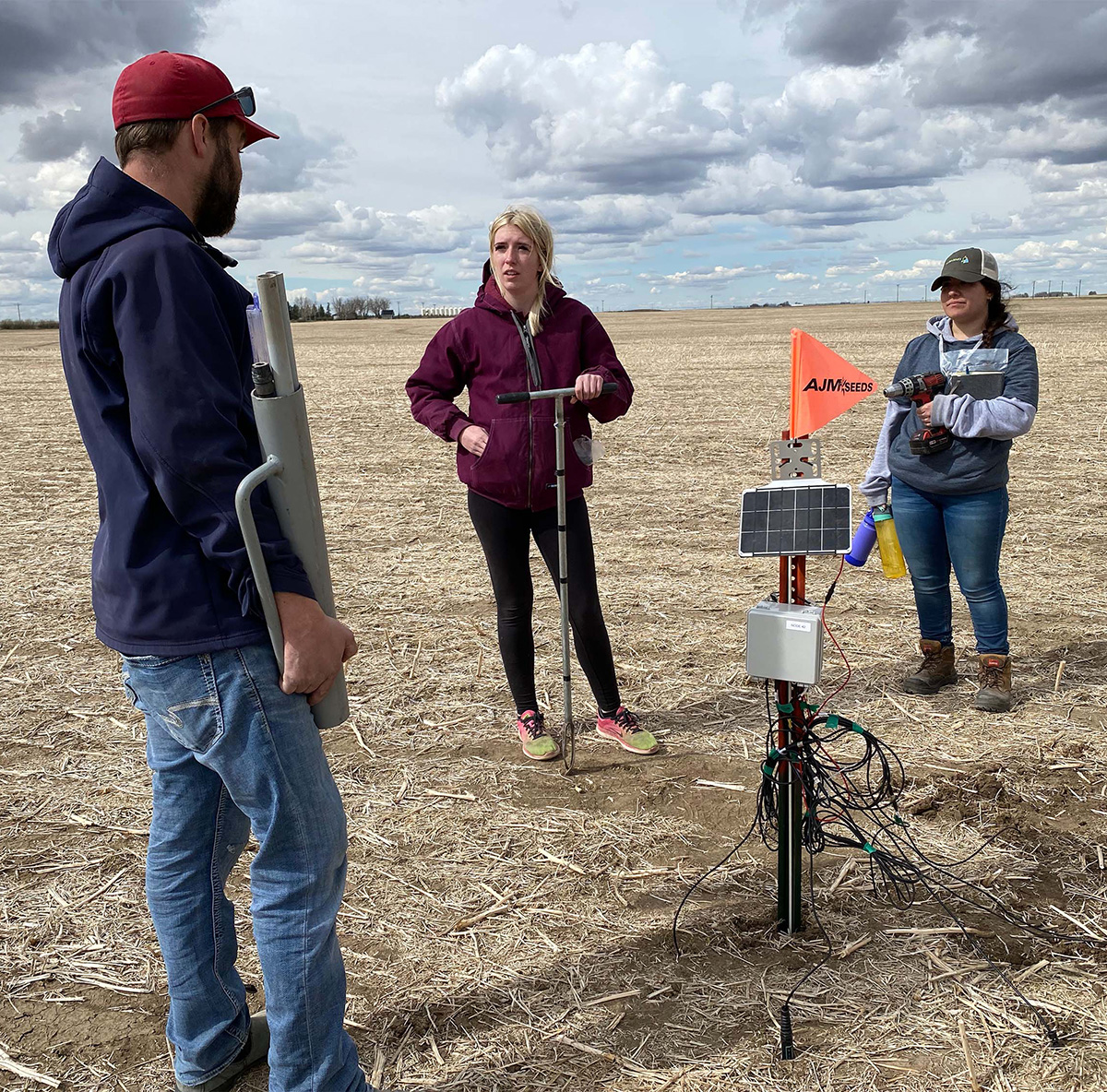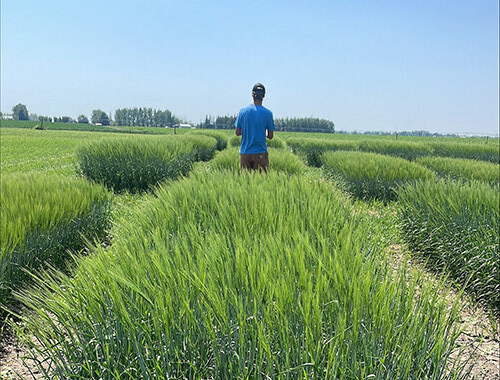From the Spring 2023 Farming Smarter Magazine
By Kristi Cox
Farmers can find manually checking soil moisture and creating effective prescriptions through the cropping season cumbersome. Farming Smarter recently completed a study investigating ways to automate Variable rate irrigation (VRI) and make its full potential accessible to farmers.
The goal was to develop a module LiteFarm could offer through a free, open-source farm management tool and test it on one of Stamp Seeds’ irrigated fields in 2022.
“There is a decent amount of center pivots in southern Alberta equipped to irrigate variably,” said Lewis Baarda, Farming Smarter field tested research program manager. “It takes time, resources, and expertise to determine rates for different zones in the field, develop a digital prescription, communicate it to the pivot and ensure the pivot executes the plan properly.”
|
|
|
Image Caption: Soil moisture sensor in place. |
Before participating in this study, Nathan Stamp, farm operations manager at Stamp Seeds had created his own prescriptions. He reported that it worked okay but took considerable time and effort.
In some cases, farmers use VRI technology on a static basis. They know the low spots and high spots, so they build a couple of prescriptions for a field and deploys one of those options according to whether it’s a wet or dry year. This is a step in the right direction, but the technology can offer much more.
Baarda worked with Michele Konschuh, an irrigated crop scientist at the University of Lethbridge, Dr. Mark Johnson with Ensemble Scientific and Kevin Cussen with LiteFarm on this 18-month research project.
They successfully created a module that integrates field maps, soil moisture sensor data, weather forecasts, and crop evapotranspiration models to create a prescription for variable rate irrigation.
The team installed about 100 soil moisture sensors from Ensemble Scientific in Stamp’s field when it was seeded. They installed 17 sensor arrays giving a real time connection to the soil.
Soil sensor data remotely uploads to the model that generates a VRI prescription based on that data. Once the farmer receives this prescription, they can look at it, tweak it if needed, and then input it to the pivot control. Eventually, this could be delivered directly to the pivot.
Significant rain events in the field trial period limited the need to use the irrigation prescriptions, but this trial demonstrated the potential for automating and streamlining the process of creating VRI prescriptions.
“The prescriptions that were created were fairly accurate,” Stamp said.
As crop values and input costs increase, cost effectiveness of VRI could also increase. Having VRI accessible to more farmers would be beneficial.
“Right now, water use costs are minimal for irrigation, but as values go up, there could be a (financial) benefit of not over applying and having excess runoff,” said Stamp.
This could also be used with a non-VRI system.
“Maybe before you planned to go physically check, it would alert you that a field is drier than you thought, so you would irrigate sooner and this could potentially save you yield loss,” said Stamp.
To develop this fully, Baarda explained they would like to examine it in different environments and with different pivots. He also sees a benefit of looking at decreasing the number of sensors and zones within the field, as most producers would find 17 sensor arrays cost prohibitive.
Purchase a subscription today to read more stories from our latest magazine!
|
|
|
Image Caption: Lewis Baarda, Kirsten French, and Tal Ibanez standing by an installed sensor array. |





